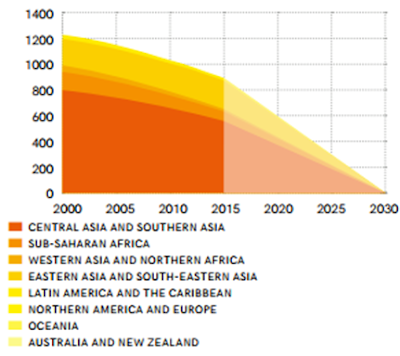I began this blog with a very limited and preconceived notion of what water and sanitation in Sub-Saharan Africa was like, I never imagined it would be such a complex topic. From reading extensively about water and sanitation I have become truly shocked by some of the realities, one thing I find so frustrating is the link between water and sanitation and health care. From my blog about the diseases in Sub-Saharan Africa, I highlighted how many of these diseases are easily prevented and eradicated by the provision of adequate water and sanitation, however, thousands of people still die every day from water and sanitation related diseases, which is so infuriating. What I also find infuriating is that it makes economic sense to invest in water and sanitation, globally $260 billion is lost annually due to inadequate water and sanitation. But, it is estimated to cost only $60 billion annually to provide adequate water and sanitation worldwide (World Health Organisation, 2012), to me it seems frustrating that this has not occurred as there are clearly so many benefits to the provision of water and sanitation.
Despite the above paragraph water and sanitation has not been all doom and gloom within Sub-Saharan Africa. Community-led approaches have helped encourage the building and use of latrines across Sub-Saharan Africa, which has been very successful for some countries, for example in Sierra Leone alone this approach has resulted in 300 villages becoming open-defecation free. The Guinea Worm which once infected 3.5 million people in 1986, now only infects 22 people a year (2015), this reduction has been a result of improvements in education about contaminating drinking water sources. All of these successes lead us towards a more equitable world in regards of water and sanitation.
As we edge ever close to 2030 (the end of the Sustainable Development Goals) we still have a long way to go in providing adequate water and sanitation in Sub-Saharan Africa and the rest of the world. But perhaps we should not just rely on the Sustainable Development Goals to achieve world-wide water and sanitation, but instead use our voice to share the message that providing water and sanitation is important, or perhaps like Matt Damon you may wish to go on strike (figure 1)? It has been a real joy writing this blog, and it has really opened my eyes to the issues of water and sanitation around the world, hopefully in 2030 we will all be able to celebrate when SDG 6 has been met.
Figure 1 - Matt Damon goes on strike
















